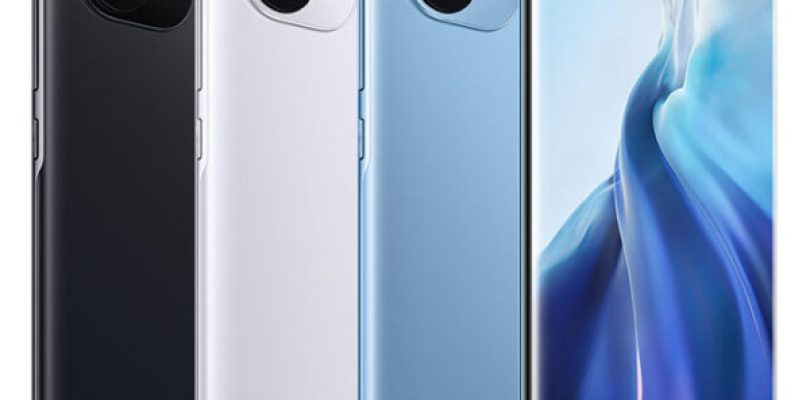Xiaomi wanted to get ahead of everyone and be the brand that launched the first mobile with Qualcomm’s Snapdragon 888, one of the processors that we will see more frequently in the high-end 2021 of Android. In the analysis of the Xiaomi Mi 11, we have thoroughly tested this protagonist, seeing how this new processor performs and, above all, that Xiaomi offers in its (for now) first proposal to win in the line of flagships.
Seeing its vocabulary, it does not seem to be the successor of the Xiaomi Mi 10 Pro but the Xiaomi Mi 10. Although we see in the table below many of the specifications that we would expect from a top-of-the-line mobile on Android during this year, we see space so that there is perhaps a superior version. But for now, let’s see what this interesting mobile offers.
From 749 euros
Xiaomi Mi 11 5G – Smartphone 8GB + 128GB, 6.81 “WQHD + AMOLED DotDisplay, Qualcomm Snapdragon 888, 108MP + 13 MP + 5MP triple camera, 4600 mAh, NFC, Midnight Gray (Official version)
Xiaomi Mi 11 5G – Smartphone 8GB + 128GB, 6.81 “WQHD + AMOLED DotDisplay, Qualcomm Snapdragon 888, 108MP + 13 MP + 5MP triple camera, 4600 mAh, NFC, Midnight Gray (Official version)
Today for € 637.81
Design: the king of curves
Differentiating in appearance is difficult if you want to follow trends; hence, we probably see relatively small but striking changes. The Mi 11 complies with the matte texture (which, although it is not glossy -traditional glass- has a lot of play with the light), the hole in the screen and the curvature of edges and corners, although it has taken something further than what we had seen before in the brand.
Curvature occurs on all sides of the screen, including the top and bottom (usually flat). It is smaller and very subtle on these sides, noticeable if we look at it without disturbing or creating any optical effect on the display (in the screen section, we will talk about the right and left sides).
The sides have a greater cascade, which leads to a thin metallic edge that is like a sandwich between it and the greater curvature of the rear. An edge that “eats” the corners of the screen, as we did not see in the Mi 10 Pro or the Xiaomi Mi 10T Pro but in the Huawei P40 Pro (in fact, it reminds us much more of it than of its predecessors in the rear, except for the module).
While it’s not the constant invasion we see on a gloss-finished rear, it gets dirtier than we expected.
Normally, the advantage of the finish that we see on this rear is that it resists better to fingerprints, but we have not found this to be the case with the Mi 11. Although it is not the constant invasion that we see on the rear with a gloss finish, it gets dirty more than we expected, although it is true that it is very easy to clean and that the traces or the natural grease that remains is very concealed.
The main downside of these matte finishes is that they can slip, but although it is more slippery than a gloss finish like the one on the Mi 10T Pro, it does not escape easily either. Of course, especially the metal edge helps with greater adherence.
The grip at the end is comfortable, and it seems adequate to us for several factors:
- It is not a very wide mobile.
- It has an adequate curvature of the back.
- It does not weigh excessively for its size.
Without being a small mobile, with 6.81 inches of screen diagonal, it is among the most compact of this selection, being the third least bulky after the LG Velvet and the iPhone Pro 12 Max.
We have left the Mi 10T Pro to check that the Mi 11 is thinner, lighter and more compact than this predecessor, although yes, the battery will also probably be smaller as it has less capacity. However, the screen of the Mi 11 is somewhat larger than that of the Mi 10T Pro, and despite being very similar to that of the Samsung Galaxy S21 Ultra, its dimensions are quite different.
Speaking of other design elements, the buttons are all set aside, leaving the rest uncluttered. The fingerprint reader is under the screen, and we see indentations for the speakers (on the upper and lower edges), with a USB type-C not aligned in the center (such as the tray for the nano sim and the speaker.
The camera module is the discordant note, being square with rounded corners (something we saw in the iPhone 11 and 12 but in a different way) and with two islands, one on top of the other, like a kind of ying-yang of glass in black and blue. Despite not standing out excessively compared to other modules, it is enough to be balanced if we use it leaning on the table without a cover.
In general, it seems a well-built mobile, with resistant materials and without appreciating parts in which dust accumulates more easily or bothers the grip. It is a comfortable mobile, relatively thin (it is almost more the feeling for having quite thin edges) and beautiful, at least we liked the light blue tone.
Display: the one that should be the starting point for any high-end
Good, Xiaomi, good. The jump to high resolution does justice to any terminal that is considered high-end and seeks to give (almost) the best in every aspect to its users. Especially without dichotomies.
The Xiaomi Mi 11 integrates a 6.81-inch AMOLED screen with WQHD + resolution (3,200 x 1,440 pixels) that reaches a maximum of 120 hertz in its refresh rate. These are “adaptive,” that is, in reality, the value varies according to the system estimates between 30, 60, 90 and 120 Hz, as we already saw in Samsung. In addition, the screen is rather elongated, with an aspect ratio of 20: 9.




